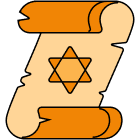Today Panchang- Aaj Ka Panchang
One of the most sought-after concepts of Vedic astrology is aaj ka panchang or today panchang, the feature of panchangam is based on the Hindu calendar. The widespread use of Western culture and systems have made it difficult for the people for people interested in the science of astrology to access today panchang, which is used to find out auspicious dates and tithis. Panchang 2024 is a complex and intricate system of astrology and is deeply rooted in Hindu culture and tradition, aaj ka panchang feature by Astromedik makes this complex feature easy to understand. It is essentially a calendar that provides detailed information about the astrological positions of the planets and their effect on human affairs at a micro level. It is used to predict future happenings, find auspicious times for important events that are in harmony with the planetary position and make sense of the subtle aspects involved in human behavior.
A system based on the belief that planetary position and their relationships have a profound impact on human affairs is Vedic astrology. The aaj ka Panchang or today panchang factors in these planetary position including the sun, moon, seven visible planets, and nodes of the moon and sun. With this information, the Panchang 2024 creates an astrological day planner that delineates important events throughout the day: sunrise and sunset timings, along with other planetary details and lunar cycle phase details.









